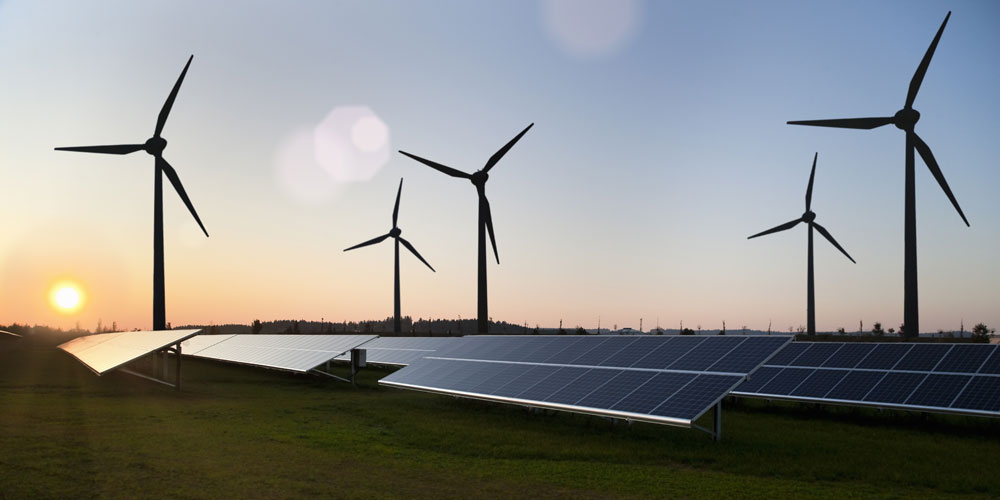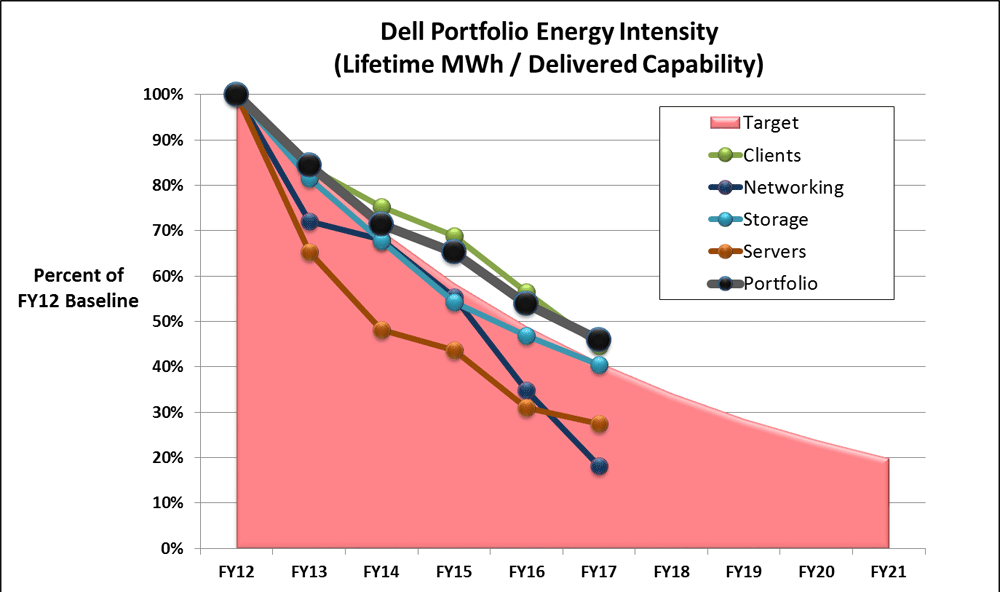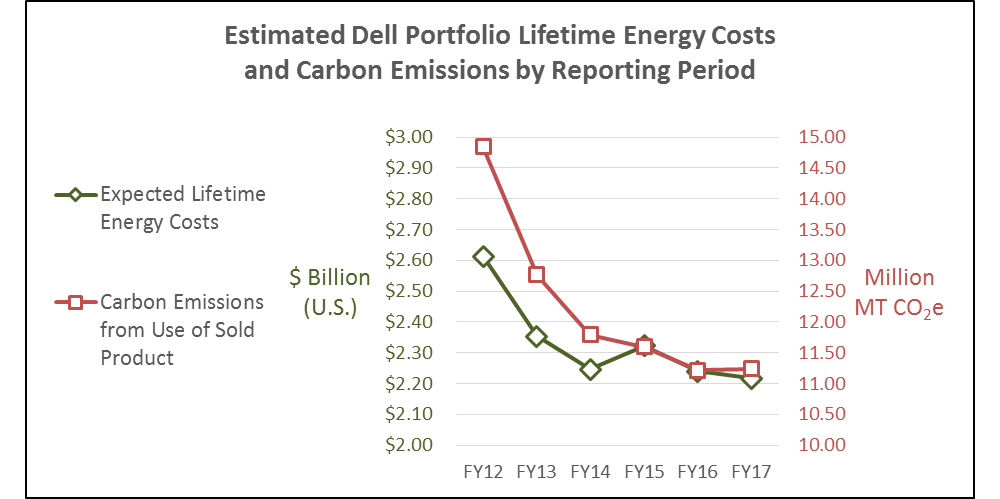The energy efficiency of IT equipment is not a new topic.
My partner in this energy intensity endeavor, Dell Enterprise Energy Strategist Gary Verdun, tells me that for notebooks energy efficiency has been a part of the design focus since the product category existed and became much more important for other product categories around the 2005 time frame. Prior to 2013, our Dell products’ energy goals had relatively short timeframes and focused on specific product types.

This approach had value, as we have many different types of customers with different IT energy efficiency concerns and interests. For example:
- The notebook user experiences energy efficiency most directly through battery life.
- A large IT organization may be interested in the total energy-related IT costs across a large installation.
- The data center manager may be concerned about his or her ability to provision power to newly deployed equipment – maybe at the rack level, but possibly at the level of the entire data center as well.
As useful as these goals were, we knew we needed something more comprehensive to guide our work to reduce the energy intensity of our Dell products, on behalf of our customers and the planet.
So, when we launched our Legacy of Good strategy in the fall of 2013, we included our industry’s first portfolio-wide energy intensity goal. With this goal, Dell announced its intent to reduce the energy intensity of its product portfolio by 80 percent by 2020, from a Fiscal Year 2012 baseline (Dell’s fiscal year 2012 runs from February 2011 through January 2012).
We’re now halfway through that goal and have year-over-year information that goes back to our baseline year. That’s six years of data on product introductions, energy use, and performance. And it shows we’ve made a lot progress. From our FY12 baseline through FY17, we’ve reduced our portfolio’s energy intensity by 54 percent. This is slightly off the pace required to hit our target, but it still shows that all of our product categories are moving aggressively in the right direction.

Six years is also long enough to see some interesting trends – trends that show how our products, and our customers’ preferences have changed.
To calculate the metrics for our goal, not only do we have to estimate the lifetime energy use of our product, we also have to estimate how much compute power we are delivering to our customers. During our baseline year, our calculations suggest that we shipped over four times as much compute capability in our notebooks, desktops and tablets than we did in our servers. Last year, that “4x” was down to “1.6x”. In other words, more and more of the compute capabilities we are providing to our customers are coming from our server products.
When we look at data on our tablets, notebooks and desktops, we’ve seen that “graphics-heavy” products (our Precision Workstations and Alienware products) are becoming a greater share of our client system footprint. This is, in part, due to the popularity of these products with our customers. It is also partly due to the significant success we’ve had with respect to improving energy intensity across our more general product lines.
We’ve also found that Dell monitors are a significant and increasing portion of our total energy footprint. The data even suggests that, sometime in the next few years, the operational energy footprint of our Dell monitor portfolio will surpass that of our Dell notebook and desktop portfolios combined, including the “graphics -heavy” products we’ve already mentioned! This isn’t because we’re somehow slacking in our focus on Dell monitor energy consumption, but because our customers are increasingly interested in having multiple, larger monitors with greater screen resolution and because of the longer lifetime of these products. In the future, our customers’ monitor(s) will be the main IT power consumer on their desks.
The data and fine detail is all “well and good,” but what does this mean for our customers?
As mentioned earlier, each customer’s experience may be slightly different. But, there’s one thing they all have in common – they’d rather not spend money on purchasing unnecessary kWh of electricity. Our goal shows we’re helping there as well.
To power the products they purchased from us last year, our customers will spend $2.2B to $2.3B over the lifetime of that equipment. This is $700 million less than they had to spend on the equipment they purchased from us back in fiscal year 2012.
Reducing energy intensity also reduces emissions intensity; we estimate a reduction in use-related carbon emissions on the order of three million metric tonnes of CO2e over the lifetime of products sold last year.

And we are doing this while we are also delivering greater and greater compute, storage and network capabilities to our customers.
As Gary notes, “Our customers continually ask for us to push the boundaries on our technology, whether they’re looking for faster performance, larger displays with greater resolution, or new features. Part of Dell being a responsible corporate citizen is our commitment to meet those needs, but doing so in a way that promotes an energy efficient and sustainable future. This guides our development activities and our participation in programs such as ENERGY STAR® and the Electronic Products Environmental Assessment Tool (EPEAT).”
Part of Dell being a responsible corporate citizen is our commitment to meet those needs, but doing so in a way that promotes an energy efficient and sustainable future.
This is just a sample of what we’ve discovered. Through our goal, we have learned much about our products and the relationship between industry trends and energy intensity. And we have every reason to believe that as we continue both with our goal and our focus on energy, we’ll both continue to learn about our portfolio, support our customers, and continue our history of success.
We talk more about our overall focus on energy efficiency here.
If you’re interested in learning more about what we’ve seen and Dell’s efforts on energy-efficient IT, you can find a mid-term report on our energy intensity goal here.
This article shares one example of how Dell is committed to driving human progress by putting our technology and expertise to work where it can do the most good for people and the planet.
Explore our FY17 Annual update on our 2020 Legacy of Good Plan at legacyofgood.dell.com.
